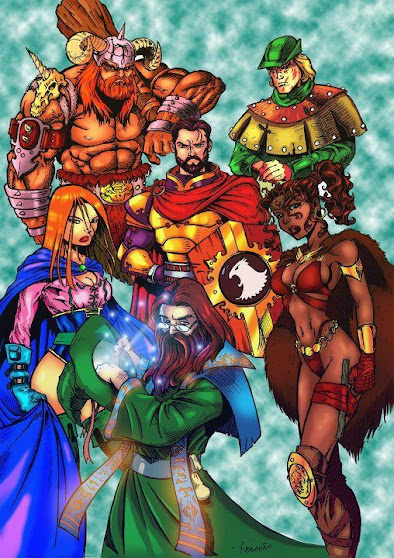A key part of any gaming campaign is its opening session, when the PCs first come together. Popular (and therefore undesirable) tropes are meeting in a tavern, in jail requiring a prison break, at a festival when something happens, or - my favorite - the ship/train/spaceship you're all on wrecks elsewhere and you must unite to survive!
My issue with this method is that roleplaying an awkward group blind date is somehow worse than an actual blind date - but not by much. Plus, this puts way too much work on the DM's shoulders of this cooperative game we call our own.
If you as a DM enjoy extra effort on your part, by all means ignore this post and write out your opening scenario that somehow binds the disparate PCs together in a lasting campaign. Just don't come fussing on the FB when it comes crashing down due to the PCs' backstories/players' expectations.
(As an aside, I firmly believe it is 100% the players' responsibility to ensure their PCs have a reason to travel and adventure with the group as a whole - DnDish games being cooperative games, after all).
Then again, if you are interested in pushing work off onto players while improving the game as a whole, then consider making the PCs a circle of friends. Not the tv show, but kinda like the tv show. After all, the six main characters of Friends were a mix of siblings, roommates, (former) co-workers, childhood friends, and eventually (ex-)lovers. Everybody knew everyone else, but not in the same fashion, nor to the same degree.
And it worked.
-----
Since it works for television, there is no reason the same idea shouldn't work at the gaming table. So here is a random table of potential shared backgrounds for your party members.
d30 Individual PC Relationships
1 in-laws
2 siblings (half or whole)
3 cousins
4 spouses
5 parent-child
6 other family
7 (ex-)lovers
8 betrothed (willingly or arranged)
9 rivals
10 childhood friends
11 parents are friends
12 current/former co-workers
13 same faith
14 same ship's crew
15 same punishment
16 same military unit
17 same acting troupe
18 same orphanage
19 same school or academy
20 same master (presuming both apprentices)
21 same pursuer (just or unjust)
22 same dream
23 Master-Apprentice
24 Teacher-Student
25 Knight-Squire
26 Debt Holder-Debtor
27 current/former roommates
28 chasing same person
29 drinking buddies (like on Cheers!)
30 local celebrity-fan
Some of these are merely variations on a theme, but the very terms imply different relationships beyond Person in Authority-Person Subject to Authority or Same Organization. Thanks, connotation!
Technically, if the party makeup consists of an Elf or other long-lived demihuman alongside short-lived races, like humans, then another possible relationship is that of a family sponsor or pet owner (the Elf) and the sponsored family or pets (one or more humans). Depending on the players, this could make for some awesome moments or a spectacular train-wreck.
Either way, being able to look at someone and tell them honestly, 'I helped raise your great-great-grandfather, your great-grandfather, your grandfather, and your father. Each and every one reacts in similar fashion to such stresses as these. Do not presume to tell me I don't know you.'
-----
The lovely part about using this method for PC backgrounds is that the relationships alone provide ample fuel for the role-playing fire. These predetermined backgrounds imply that the players themselves fill out the details about their family or shared past, providing names and places and events to the DM.
Incidental collaborative world building at its finest, and all it requires is the DM pointing at players and saying, 'your PC knows their two; your PC knows these two; etc.' In my opinion, this works best when no one knows everyone from background, just two others.
Using this feels like an odd mixture of the popular 'I know a guy' houserule and what Axian Spice did with his Who Are You tables from his Notable Novices and Notorious Newcomers in the Axian Library collection. All with a sprinkle of d4 Caltrops' immediate backgrounds for new PCs.
But it works.
Note that such a circle of friends isn't necessarily jazz band adventuring, but is related and with time becomes close enough for government work.
-----
EDIT: I found this at Coins and Scrolls, and it allows for a quick background, once you determine how to roll a 1d500. - 4/9/23
EDIT: Another fine example of a circle of friends is the crew of Firefly. I'm not sure how I forgot them. - 4/9/23
EDIT: As always, Phlox has an amazing take on starting characters. - 4/20/23
EDIT: This time from Sly Flourish: relationships for PCs at the Keep on the Borderlands and here with Fiasco-style PC relationships. - 7/3/23











